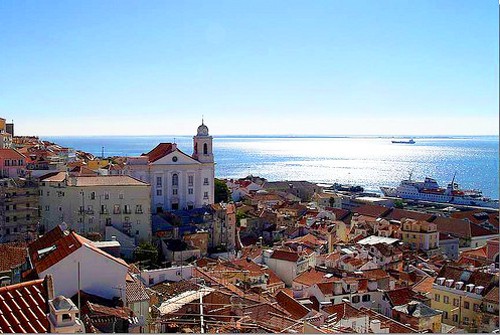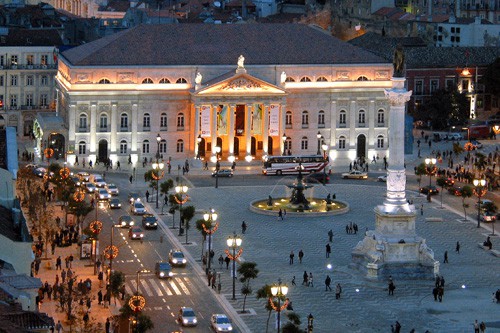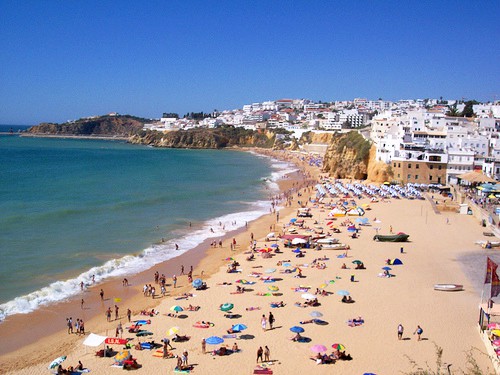The Top Places in Portugal
While no longer the quiet, hidden destination it was decades ago, Portugal is a place where it’s still easy to escape the crowds and enjoy many of the things that make travel rewarding.
From the huge, dramatic cliffs that buffer the Atlantic in the south, to the soft rolling hills and vineyards of the Duoro Valley to the North, Portugal is an amazingly diverse country given its size. Visit the beaches of the Algarve but don’t miss historic Sagres or the historic university city of Coimbra. Stroll the cobbled alleyways of Lisbon and Porto, and be sure to visit fairytale-like Sintra, Lord Byron’s favorite.
Get off the beaten track and roam about remote Estremadura, or through the cork forests and olive groves of Alentejo. And for a real adventure head to the Portuguese islands of Madeira or the Azores.
To help plan your adventure in Portugal, read about the “Top 10″ most-visited places in the country as reported by the Portuguese National Tourist Office.
Lisbon
The Baixa, Lisbon’s downtown area, is still the traditional center of city life, and is where Lisbon’s oldest and traditional shops still exist. In this heart of the city the streets that run parallel to Rua Augusta identify the various tradesmen and craftsmen, who have continued to do business there since the time of the Maritime Discoveries. You’ll find jeweler’s stores in the Rua do Ouro (Gold Street) and the Rua da Prata (Silver Street) and cloth and clothes stores in Rua dos Fanqueiros (Drapers’ Street).The Baixa was destroyed by the earthquake of 1755, but was later reconstructed by the king’s prime minister, the Marquês de Pombal, which is why it is more popularly known as the Baixa Pombalina. This visionary conceived a uniform and perpendicular architecture for the city center, making no distinction between the various social strata that lived here, a phenomenon that can still be seen today.
Recently renovated, it hasn’t lost any of its mysticism… Feel it around the D. Maria II National Theater, where many plays were, and are, performed and seen by Kings and Queens, around the fountains used at the beginning of October to baptize the freshmen as they were about to enter the University -, around the cafes frequented by famous Portuguese personalities – like Cafe Nicola founded in 1929 – and yes, oh yes, smell it in the freshly roasted chestnuts that have been sold in the Rossio Square for many, many years.
Algarve
Sea, sun and sand mark Portugal’s famous Algarve. While the region’s beaches and picturesque villages have made it world renown, the region also has some world-renown golf courses. The area’s capital, Faro, remains nearly the same as it was in the 18th century, with its charming neighborhoods intact. A big draw for travelers here is also the region’s temperate climate which has little rainfall and an average 3,000 hours of sunlight each year.Lagos and Sagres on the east end of the Algarve date back to Roman times. But it was in the 15th century that Sagres achieved importance with the frequent presence of Prince Henry the Navigator during the first days of Atlantic exploration of the African coast as far as the Gulf of Guinea.
Visit the Fortaleza de Sagres (a fortress built in the 15th century and generally thought to be the site of Prince Henry’s “School of Navigation”) and Cape of São Vicente, one of the most westerly points of the European continent after Cabo da Roca. It was also a sacred place to the Romans who called it Promontorium Sacrum.
Sintra
Sintra’s Palácio da Pena is one of the best examples of 19th-century Romantic revivalism in Portugal.Set at the top of the Monte da Pena, the palace was built on the site of an old monastery belonging to the Order of St. Jerome. It was the result of the imagination of Dom Fernando of Saxe Coburg-Gotha, who married Queen Dona Maria II in 1836. After falling in love with Sintra, he decided to buy the convent and the surrounding land to build a summer palace for the royal family. The royal consort built the palace in a somewhat offbeat mixture of architectural styles, and in the surrounding area established a beautiful woodland park in English style, with a wide variety of exotic trees.
The highlight of the beautiful interior of the palace is the chapel, with its magnificent alabaster altarpiece attributed to Nicolau Chanterenne, one of the architects of the Mosteiro dos Jerónimos, in Lisbon. A restaurant has now been opened in one of the wings of the palace, with a terrace that offers a beautiful panoramic view of Serra de Sintra and the coast.
Porto
Capital and gateway to the north of Portugal, Porto is both the city that provided a nation with a name and a fortified wine known worldwide as port.With its splendid geographical location on the mouth of the Douro River and an architectural heritage of exceptional quality, the historic center of Porto was declared a UNESCO World Heritage in 1996. The second largest city in the country; it’s a city known for its commercial enterprise.
The Cais da Ribeira riverfront is the center of the city center and the most picturesque part of Porto. The area has a mix of ancient narrow streets and narrower alleyways, with centuries-old buildings. Old homes of granite and tile loom over the waterfront, and the harbor is filled with Rabelo boats and river excursion ships. In 1996 the Cais de Ribeira area was named a World Heritage Site by UNESCO.
The Cais da Ribeira is a romantic place that comes alive as the sun goes down, when the numerous cafés, bars and restaurants open. Couples stroll along the Douro, as the hint of music drifts from the bars and cafes, and the smell of coffee and grilled fish fills the air.






No comments:
Post a Comment